The industrial age arrived in Cowley, now part of Oxford, with the opening of the Morris Motors complex, in 1912. The famous company was founded by William Morris, who designed his first car (the Bull Nose Morris) in Oxford. Morris was later created Lord Nuffield, after the Oxfordshire village where he had settled. He is also famous as the man who gave away as much money as he made, at least £30 million in his lifetime.
A print and text about The William Morris.
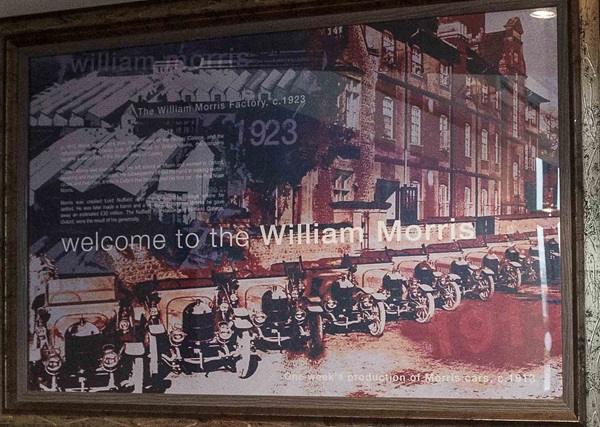
The text reads: In 1912 Morris Motors took over the premises of the Military College, and the industrialisation of Cowley took off. Founded by William Morris, the company became a major part of the life and times Cowley.
William Morris was born in 1877. He left school at fifteen and worked in Oxford, repairing and making bicycles. He subsequently turned his hand to making motor-cycles and then cars. It was in Oxford that he designed his first car – the Bullnose Morris.
Morris was created Lord Nuffield after the Oxfordshire village where he settled. He was later made a baron and a viscount. During his lifetime he gave away an estimated £30 million. The Nuffield Foundation and Nuffield College, Oxford, were the result of his generosity.
Prints and text about the Oxfordshire Steam Plough Company.
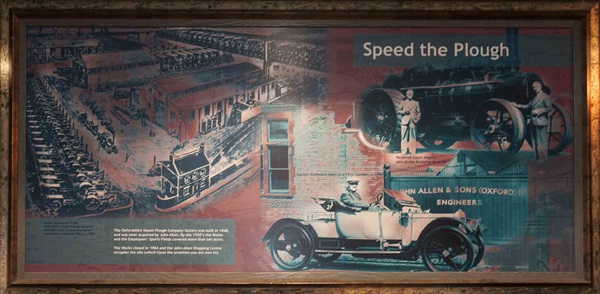
The text reads: The Oxfordshire Steam Plough Company factory was built in 1868, and was later acquired by John Allen. By the 1950s the Works and Employees’ Sports Fields covered more than ten acres.
The works closed in 1984 and the John Allen Shopping Centre occupies the site (which faces the premises you are now in).
Prints and text about the changes in Cowley.
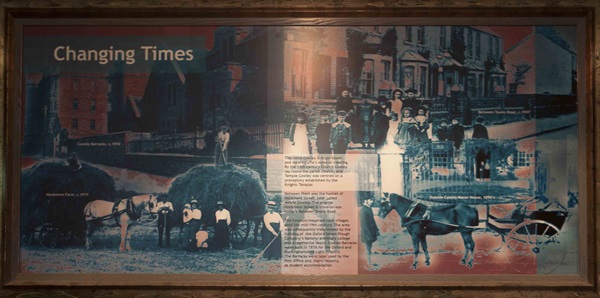
The text reads: The name Cowley is Anglo-Saxon and means Cuffa’s wood or clearing. By the 12th century Church Cowley lay round the parish church, and Temple Cowley was centred on a preceptor established by the Knights Templar.
Between them was a hamlet of Hockmore Street, later called Middle Cowley. The original Hockmore Street is more-or-less today’s Between Towns Road.
The Cowleys remained rural villages until the mid 19th century. The area was subsequently transformed by the building of the Oxford Steam Plough Company’s factory, a military college and a regimental depot. Cowley Barracks were built in 1876 for the Oxford and Buckinghamshire Light infantry. The Barracks were later used by the Post Office and, more recently, as student accommodation.
Prints of the Oxfordshire Steam Plough Company.
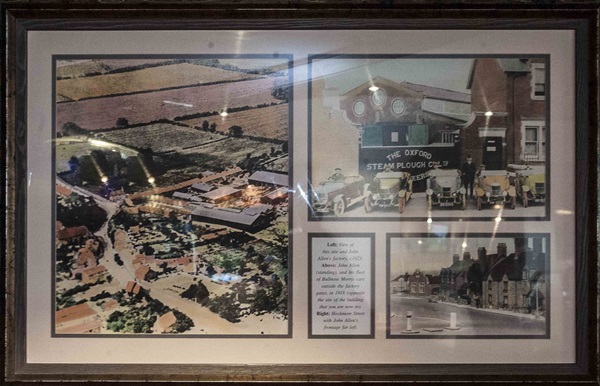
Left: View of this site and John Allen’s factory, c1923
Above: John Allen (standing), and his fleet of Bullnose Morris cars outside the factory gates in 1918 (opposite the site of the building that you are now in)
Right: Hockmore Street with John Allen’s frontage far left.
Prints and text about Templars Square.
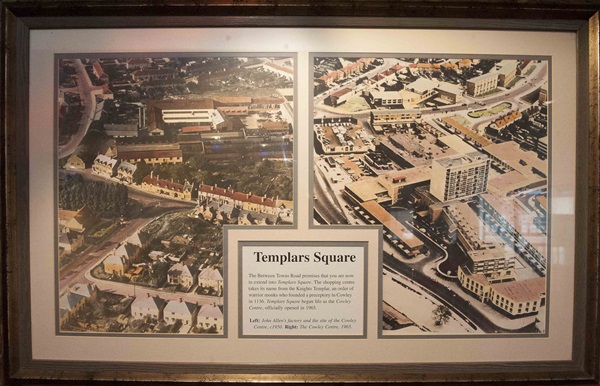
The text reads: The Between Town Road premises that you are now in extend into Templars Square. The shopping centre takes its name from the Knights Templar, an order of warrior monks who founded a preceptor in Cowley in 1136. Templars Square began life as the Cowley Centre, officially opened in 1965.
Left: John Allen’s factory and the site of the Cowley Centre, c1950
Right: The Cowley Centre, 1965.
Prints and text about the Oxford Military College.
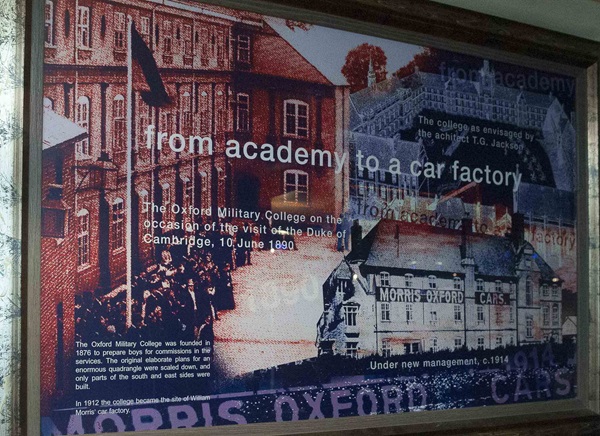
The text reads: The Oxford Military College was founded in 1876 to prepare boys for commissions in the services. The original elaborate plans for an enormous quadrangle were scaled down and only parts of the south and east sides were built.
In 1912 the college became the site of William Morris’ car factory.
External photograph of the building – main entrance.
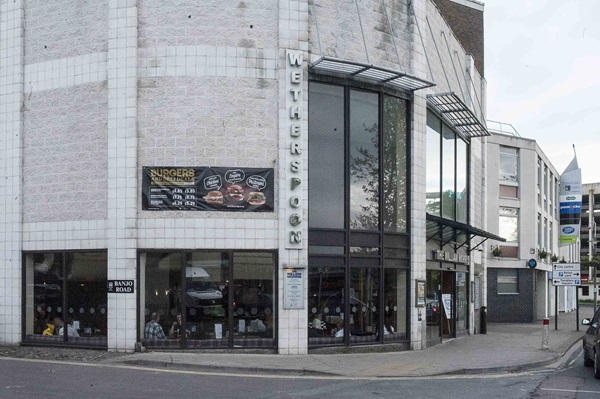
If you have information on the history of this pub, then we’d like you to share it with us. Please e-mail all information to: pubhistories@jdwetherspoon.co.uk